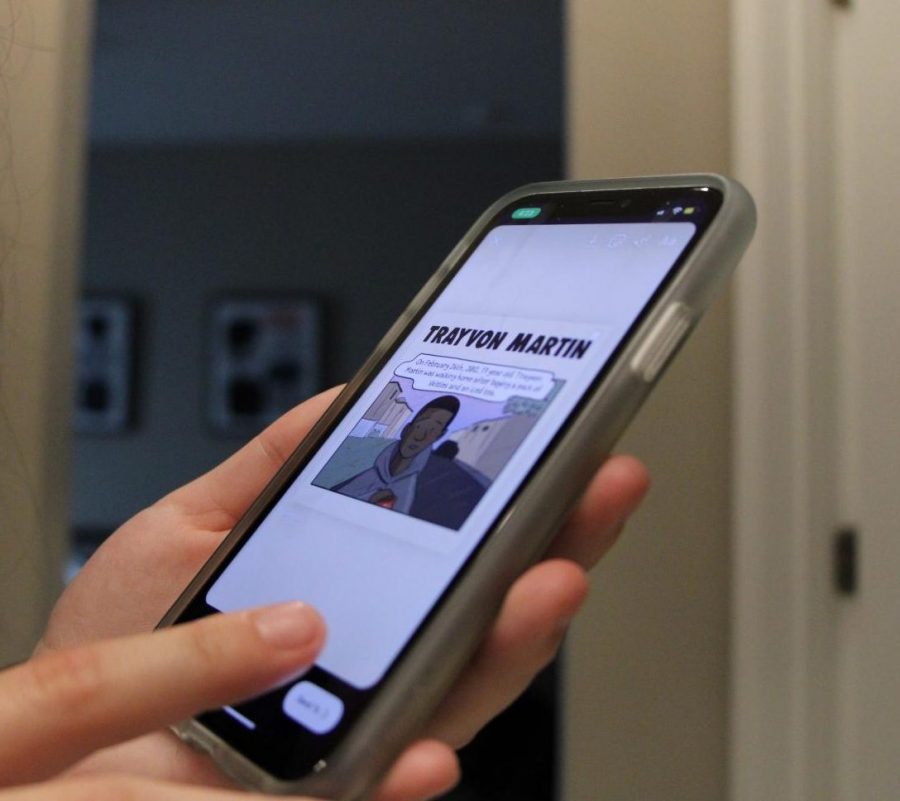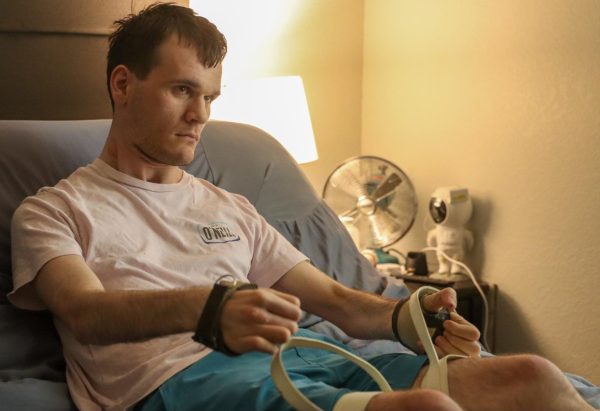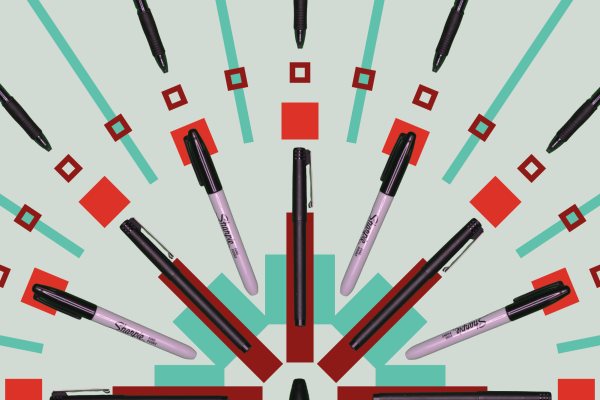The online side of advocacy
Sarah Hinnant
Caitlyn Hale utilizes her Instagram account to show her support for the Black Lives Matter movement.
February 23, 2021
Social media has never been short of hypocrisy, controversy, and conflict. Celebrities encouraging social distancing during the pandemic only to hop on a plane to the Bahamas a week later, is just one example, and with the recent uprise in virtual activism, those with a larger following have more chances to take advantage of popular movements.
Activism has made its way from the front cover of the Sunday paper to the Instagram bios of media users over the span of 60 years. It utilizes online platforms in order to reach a wider audience and raise awareness for movements. It has become a tool for teen audiences to share ideas and support campaigns, while keeping audiences up-to-date with current issues.
“I’ve posted something activist related on multiple occasions, each time with the same goal– to spread awareness or educate my peers,” senior Amira Ali said.
She has participated in the new surge of online advocacy, especially through Instagram stories, Twitter threads, and virtual petitions to spread awareness and push for social justice. Social media has not only become an outlet for activism, but has provided millions with an opportunity to both learn and teach. Sophomore Ciara Bibbs makes frequent efforts to raise awareness for Black Lives Matter.
“I’m a black girl living in a prejudiced America,” Bibbs said. “I like to stay aware because I want to be educated.”
Change.org, a rapidly growing activism platform, has allowed users to create and sign petitions intended to push for change by creating social pressure on organizations, legislative officials, and others who are in power to directly enact change.
Along with its newfound popularity, the efficiency of virtual activism has come into question. The purpose of petitions is to influence those in power to enact change, yet the government does not guarantee any response to virtual petitions, and government-launched petitioning platforms such as We the People, have been rendered inactive. The site was created under former President Barack Obama and was responded to frequently. Without it, government involvement in change is even scarcer.
“[Petitions can] be used to make notice of the want for change but I don’t really think the majority of change.org petitions are super effective,” sophomore Caitlyn Hale said.
Because of their lack of affiliation with federal powers, it becomes difficult for petitions to initiate any real change. For example, the preservation of the Arctic National Wildlife Refuge (ANWR). The effort had accumulated thousands of supporters in light of former president Donald Trump’s efforts to auction off it’s land to oil drilling companies. The auction was officialized Jan. 6, and the deadline created an Internet-wide countdown once it was widespread. Millions of letters were sent to the Trump administration, online petitions accumulated thousands of signatures, and even Tik Tok comment sections became littered with auction-day countdowns. However, when the day finally arrived, the auction proceeded despite the movement’s traction.
“A lot of the time, if you see something influential happening around social media, you’ll see hundreds of people posting the exact same thing. It spreads a good message, but a lot of the time it can seem a little more of almost pure influence than genuine ideas,” senior Diego Suprenant said.
The climate that Supranait describes has become widely known as performative activism, in which showing that one supports a movement becomes more important than making real change.
Because performative activism often occurs alongside widespread awareness, it becomes difficult to distinguish productive protesting from unproductive showcasing, especially when it comes to companies catering to their audience to come across as “genuine” or “ethical.”
“When companies or famous people post about activism, my immediate thought is ‘are they sincere?’” Ali said. “From there, I question their actions. Are they actively trying to either educate people around them, raise money towards the solution, or change their surroundings for the better?”
Although it can spread a movement to millions of people, the superficial nature of performative activism can lead to a lack of legitimate change. Bibbs, however, believes that there is still value in awareness, regardless of one’s popularity, status, or method of advocating.
“To me it doesn’t matter whether you have two people following you or 1 [million],” Bibbs said. “If you believe in a topic and you think more people should be talking about it, share it.”
This story was originally published on Hagerty Journalism Today on February 20, 2021.






























![IN THE SPOTLIGHT: Junior Zalie Mann performs “I Love to Cry at Weddings,” an ensemble piece from the fall musical Sweet Charity, to prospective students during the Fine Arts Showcase on Wednesday, Nov. 8. The showcase is a compilation of performances and demonstrations from each fine arts strand offered at McCallum. This show is put on so that prospective students can see if they are interested in joining an academy or major.
Sweet Charity originally ran the weekends of Sept. 28 and Oct. 8, but made a comeback for the Fine Arts Showcase.
“[Being at the front in the spotlight] is my favorite part of the whole dance, so I was super happy to be on stage performing and smiling at the audience,” Mann said.
Mann performed in both the musical theatre performance and dance excerpt “Ethereal,” a contemporary piece choreographed by the new dance director Terrance Carson, in the showcase. With also being a dance ambassador, Mann got to talk about what MAC dance is, her experience and answer any questions the aspiring arts majors and their parents may have.
Caption by Maya Tackett.](https://bestofsno.com/wp-content/uploads/2024/02/53321803427_47cd17fe70_o-1-1200x800.jpg)
![SPREADING THE JOY: Sophomore Chim Becker poses with sophomores Cozbi Sims and Lou Davidson while manning a table at the Hispanic Heritage treat day during lunch of Sept 28. Becker is a part of the students of color alliance, who put together the activity to raise money for their club.
“It [the stand] was really fun because McCallum has a lot of latino kids,” Becker said. “And I think it was nice that I could share the stuff that I usually just have at home with people who have never tried it before.”
Becker recognizes the importance of celebrating Hispanic heritage at Mac.
“I think its important to celebrate,” Becker said. “Because our culture is awesome and super cool, and everybody should be able to learn about other cultures of the world.”
Caption by JoJo Barnard.](https://bestofsno.com/wp-content/uploads/2024/01/53221601352_4127a81c41_o-1200x675.jpg)














